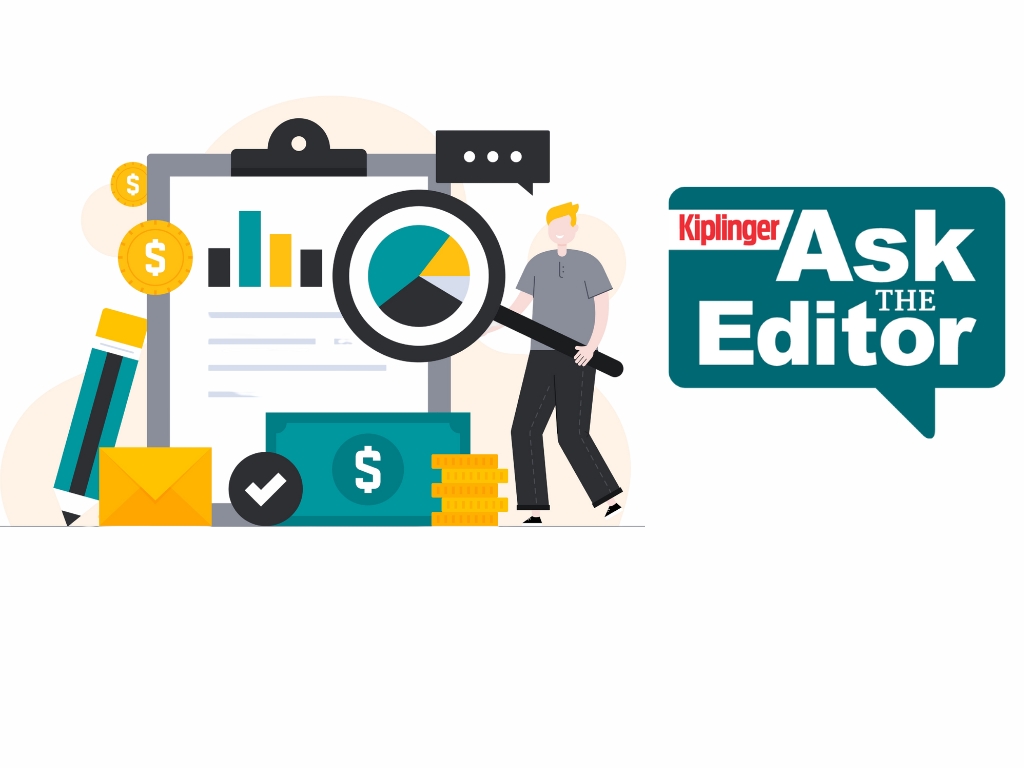Bullish on Banks -- Again
The manger of FBR Large Cap Financial and FBR Small Cap Financial funds says the industry -- which he soured on two years ago -- should do well the next three to five years.
Dave Ellison's FBR Large Cap Financial (symbol FBRFX) is up 24% year to date through May 8. More astoundingly, the fund lost only 3% annualized over the past three years, an average of 13 percentage points per year better than a basket of financial-stock funds. The relative performance of his FBR Small Cap Financial (FBRSX) has been nearly as impressive.
How did he manage that feat while tethered to a sector that crashed and burned? Last year, he built up the large-bank fund's cash levels to 50% to 60% of assets. In fact, he soured on the industry two years ago, anticipating a surge in nonperforming loans (those in or near default), which "historically have been a killer of earnings for financials."
Ellison has invested in banks for more than 25 years, first as a Fidelity analyst and long-time manager of Fidelity Select Home Finance. Then he decamped to FBR, where he launched the two bank funds in December 1996.

Sign up for Kiplinger’s Free E-Newsletters
Profit and prosper with the best of expert advice on investing, taxes, retirement, personal finance and more - straight to your e-mail.
Profit and prosper with the best of expert advice - straight to your e-mail.
Recently, Ellison turned bullish on banks again. He has invested nearly all of the cash in his large-company fund and is furiously putting spare cash to work in small financial companies. Why? He looks at banks as an industry that runs in cycles, almost -- oscillating between years as good, simple, profitable lending businesses and stretches of greed and stupidity, in which bankers seem to forget all the lessons of the past. Says Ellison: "The last four to five years the regulators, the Fed, the bank executives, Wall Street analysts and mutual fund managers didn't do their jobs. We had this collective brain cr everybody was along for the ride."
That era is over now, and he says the industry is in full clean-up mode. Banks are raising capital, sprucing up ailing balance sheets, simplifying accounting, improving risk controls and becoming more transparent. "Everybody has admitted to being an alcoholic, so they're halfway there," he says. "When a company wants to get better and survive, typically it will."
What Ellison foresees is a favorable cycle for banks stretching for at least three to five years. "The next three to five years are a much better time to invest because financials have gotten religion about risk," he says.
Profits won't surge immediately, but that's because the banks are focused first on rebuilding balance-sheet strength to fortify the foundation. "You make money in financials when operating conditions go from ugly to okay, or okay to good, not from good to great," he says. In fact, when profits look great in banks it's probably time to lighten up because of the cycle of banker stupidity.
Ellison compares this early stage in the up-cycle in bank stocks with the early 1990s, when a tide of nonperforming commercial real estate and condominium loans similarly crushed the industry. Brave investors who arrived on the scene after the bulk of the damage was done were rewarded with handsome returns over five years for investing in ugly bank stocks.
Some of the bigger holdings in Ellison's large-company fund are JPMorgan Chase (JPM), Morgan Stanley (MS), Goldman Sachs (GS), Wells Fargo (WFC) and American Express (AXP).
Ellison predicts that "mistakes won't be repeated for five to ten years" because the recent debacle was "such a searing event." But then watch out. He says banks' institutional memories stretch only about ten years. Sooner or later, they'll hit the bottle again.
As much as we admire Ellison, we're reluctant to recommend his funds because of their high fees (the annual expense ratio is 1.88% for FBR Large Cap Financial and 1.49% for Small Cap Financial, according to Morningstar). Look to cheaper alternatives among exchange-traded funds, such as SPDR KBW Bank (KBE), which tracks an index of large bank stocks, and SPDR KWB Regional Banking (KRE), which focuses on small banks. They each charge 0.35% a year.
Get Kiplinger Today newsletter — free
Profit and prosper with the best of Kiplinger's advice on investing, taxes, retirement, personal finance and much more. Delivered daily. Enter your email in the box and click Sign Me Up.
Andrew Tanzer is an editorial consultant and investment writer. After working as a journalist for 25 years at magazines that included Forbes and Kiplinger’s Personal Finance, he served as a senior research analyst and investment writer at a leading New York-based financial advisor. Andrew currently writes for several large hedge and mutual funds, private wealth advisors, and a major bank. He earned a BA in East Asian Studies from Wesleyan University, an MS in Journalism from the Columbia Graduate School of Journalism, and holds both CFA and CFP® designations.
-
 Ask the Editor — Reader Questions on Tax Deductions, Losses
Ask the Editor — Reader Questions on Tax Deductions, LossesIn our Ask the Editor series, Joy Taylor, The Kiplinger Tax Letter Editor, answers readers' questions on tax deductions and losses.
-
 Upsizing in Retirement: Why You Should (and Shouldn't) Do It
Upsizing in Retirement: Why You Should (and Shouldn't) Do ItUpsizing, or buying a bigger home, can make your retirement feel more luxurious. There's room for grandkids and projects, but run the numbers carefully.
-
 The 5 Best Actively Managed Fidelity Funds to Buy Now
The 5 Best Actively Managed Fidelity Funds to Buy Nowmutual funds In a stock picker's market, it's sometimes best to leave the driving to the pros. These Fidelity funds provide investors solid active management at low costs.
-
 The 12 Best Bear Market ETFs to Buy Now
The 12 Best Bear Market ETFs to Buy NowETFs Investors who are fearful about the more uncertainty in the new year can find plenty of protection among these bear market ETFs.
-
 Don't Give Up on the Eurozone
Don't Give Up on the Eurozonemutual funds As Europe’s economy (and stock markets) wobble, Janus Henderson European Focus Fund (HFETX) keeps its footing with a focus on large Europe-based multinationals.
-
 Vanguard Global ESG Select Stock Profits from ESG Leaders
Vanguard Global ESG Select Stock Profits from ESG Leadersmutual funds Vanguard Global ESG Select Stock (VEIGX) favors firms with high standards for their businesses.
-
 Kip ETF 20: What's In, What's Out and Why
Kip ETF 20: What's In, What's Out and WhyKip ETF 20 The broad market has taken a major hit so far in 2022, sparking some tactical changes to Kiplinger's lineup of the best low-cost ETFs.
-
 ETFs Are Now Mainstream. Here's Why They're So Appealing.
ETFs Are Now Mainstream. Here's Why They're So Appealing.Investing for Income ETFs offer investors broad diversification to their portfolios and at low costs to boot.
-
 Do You Have Gun Stocks in Your Funds?
Do You Have Gun Stocks in Your Funds?ESG Investors looking to make changes amid gun violence can easily divest from gun stocks ... though it's trickier if they own them through funds.
-
 How to Choose a Mutual Fund
How to Choose a Mutual Fundmutual funds Investors wanting to build a portfolio will have no shortage of mutual funds at their disposal. And that's one of the biggest problems in choosing just one or two.